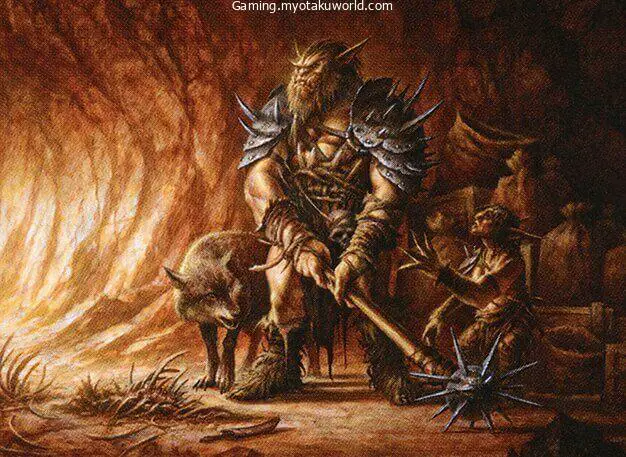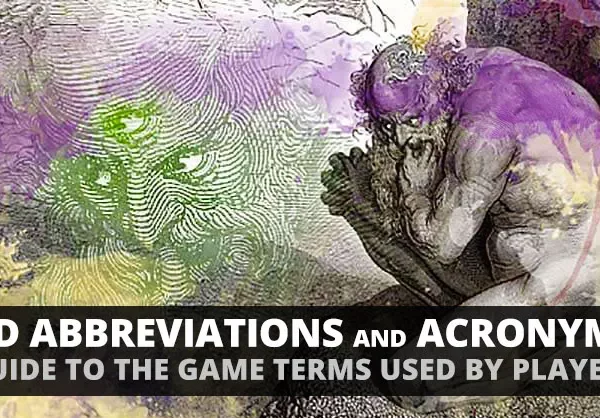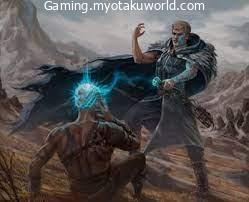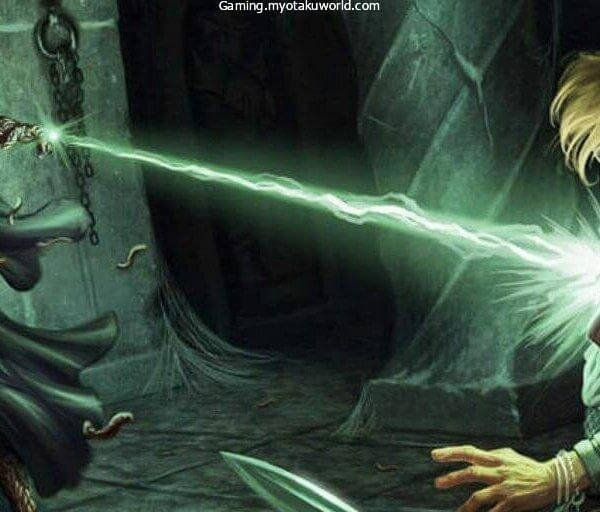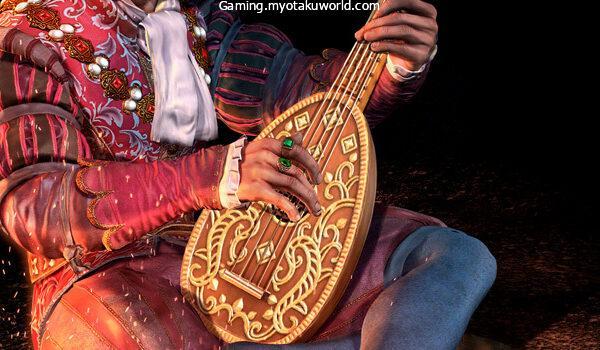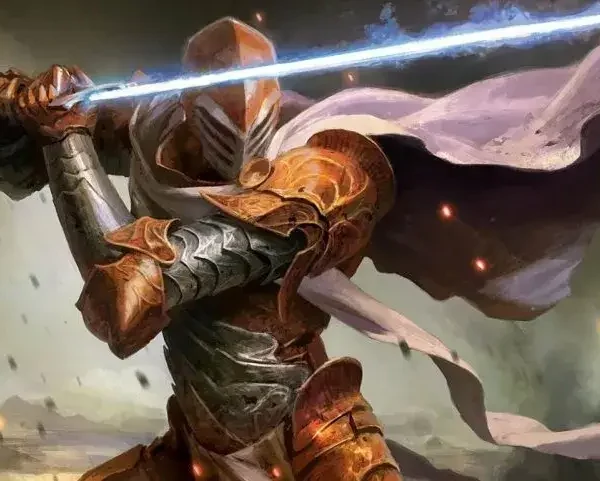Monsters are intriguing creatures within the universe of D&D. They are typically used in campaigns to be used as an enemy to the party.
To the players, they are villains who have pledged to destroy the party at any cost. the price.
But, little thought is given to why they are taking this action. If they’re not as intelligent, they may be doing it out of fear they feel they’re in danger.
Certain monsters can make choices by themselves using logical thought. They could be working for the evil big man (commonly known as BBEG) as they are in need to feed their families.
Perhaps they’ve been placed in a tough situation in which they are forced to choose to confront the BBEG. It is important to note to a D&D DM that playing D&D isn’t always all black and white.
Sometimes, they’re smart enough to make it a part of an adventure group. Their dreams, ambitions, and desires are greater than what their normal counterparts make, and they’ll have to cooperate with other people to accomplish their goals.
This article will take on an animal similar to Bugbears.
It’s like bugbears that be violent and destructive. They are said to be chaotic and evil. creatures were made for fighting and chaos and are a bully to those who are weaker than them.
But, they also change their heart through a supernatural intervention or eye-opening event.
Do you want to include the bugbear in the role of a villain in your D&D adventure?
Or would you like to play a Bugbear?
Do you want to play as a bugbear?
DnD Bugbear Guide can handle every one of those issues.
What is a Bugbear in D&D?

Bugbears are furry humanoid animals that are typically large and muscular. They are akin to Hobgoblins and goblins.
However, bugs are fond of enslaving and forcing them to give their desires. They are known as not trustworthy allies and bloodthirsty monsters.
They believe in a god of lesser importance known as Hruggek and believe that when they die their spirit will be given the chance to join forces with this god.
In the absence of hobgoblins or goblins to stomp around and slave and enslave, they form loose warbands, led by the most ferocious bugbear of the group. Additionally, despite their huge presence, they’re surprisingly discreet.
They are prone to ambush their targets but flee when they believe they are outnumbered or outmatched.
They are reliable mercenaries if paid well, however, they will show that they have no loyalty when their lives are at stake.
They may be introduced into the narrative as an antagonist to the group. They may be the owners of abandoned homes that the party has to get into. They can also be employed by the BBEG to take you down.
However, if you’d like to play the role of bugbears, you could with Volo’s Guide to Monsters. Your character is able to defy the expectations of others if you choose to if you can provide a convincing reason to do so.
Stat block of Bugbear (as an example of a monster)
Bugbears aren’t uncommon creatures They are not uncommon, and you can include one in your campaign. They typically are with their relatives, but as an enslaver, or as a leader.
If you intend to make your players fight or engage with a bugbear, then you will require its stats.
So, here is the essential information you will require.
Be aware that this information was extracted out of the Monster Manual on page 33.
Key Information and Defensive Statistics
Below is the essential information about the bugbear as well as their defensive stats, such as the Armor Class (or AC) and HP.
- Bugbear
- Size: Medium humanoid (goblinoid)
- Alignment: Chaotic Evil
- Environment: Forest, Grassland, Underdark
- Armor Class 16 (with shield and armor that hides)
- Hit Points: 27 (5d8 + 5)
- Speed: 30 ft.
- Challenge Rating: Challenge 1 (200 XP)
Alignment can help determine the way that a bugbear is expected to be, but keep in mind that it’s only a guideline that you can alter how the bugbear in your story behaves. Bugbears are typically located in grasslands, forests, or in the Underdark.
However, again, you are able to alter this. This is because the class of armor is the class that attacks rolls that are made against the creature must-have.
It is possible to use the bugbear’s hit points average of 27 or use 5d8 plus 5 to get the variety.
A challenge rating system is one method that is used in D&D 5th Edition that measures how difficult the monster will be to take down depending on the number of players.
There are numerous tutorials about how to determine the challenge rating, but there are also simple tools to determine a monster’s the difficulty of a monster’s pack.
Ability Scores and Proficiencies
The next section will detail the scores for the abilities of monster and their abilities. The number in the parenthesis outside is their ability score and that number inside is their score modifier.
| Strength | Dexterity | Constitution | Intelligence | Wisdom | Charisma |
| 15 (+2) | 14 (+2) | 13 (+1) | 8 (-1) | 11 (+0) | 9 (-1) |
Proficiencies
- Skills: Stealth (+6), Survival (+2)
- Senses: darkvision 60 ft., passive perception 10
- Languages: Common, Goblin
- Proficiency Bonus: +2
They are naturally stealthy therefore they are adept at their Stealth skills. They are also adept in their survival skills because they are able to be able to live in wild.
Therefore, when an animal makes a Stealth check, they’ll put a +6 on their roll. If they make a Survival check, they’d have a +2 added to their roll.
They can see through the darkness for up to 60 feet. away from or 12 squares in accordance with typical battle map tile measurements.
The bugbear has a passive sense of 10, which means that should you wish to sneak in with a bugbear you’ll need to make sure your Stealth check must be greater or equal to 10.
Because bugbears are goblinoids they can communicate in Goblin and Common. They also have a bonus to their proficiency of +2, which means the attack rolls they make using weapons they’re proficient with get an additional +2.
Abilities and Actions

Bugbears have natural abilities that can be useful when fighting a fight. These abilities, along with the potential actions that a bugbear could take in combat are listed below.
Abilities
- Brute: The bugbear’s effective melee weapon attack can deal one additional per die of damage. It is important to note that this is already evident on the attack list below.
- Surprising Attack: Bugbears are able to surprise their enemies. If the bugbear succeeds in striking a creature in the first phase of combat, and that creature is shocked by the assault, the victim is hit with an additional seven (2d6) damage as a result of the attack.
Actions
Morningstar: The bugbear is able to make an attack in melee using the help of a Morningstar.
Add: +4 to attack roll.
Reach: 5 feet. One to target
Damage 11: (2d8 + 2) Piercing damage
Javelin: The bugbear can make a melee, or ranged, weapon attack by using the use of a Javelin.
Add +4 to attack roll.
Reach: 5 feet. (as a melee attack) or 30/120 feet. (as an attack from a distance) 1 to target
Damage: 9 (2d6 + 2) damaging piercing damage when used in melee attacks; 5, (1d6 + 2) perforating damage as an attack from a distance.
Bugbear block stats (as race)
If you’d like to act like a bugbear, then you certainly could! Monsters are often able to be a great source of storytelling and roleplaying opportunities.
It is possible to create an explanation for your character that explains why the monster would like to live an adventurous life. Perhaps the bugbear was nurtured by humans who loved them as a child.
Maybe they fell on their heads at some point and decided to give back to the world. It’s your choice to make the decision.
If you are planning to be a member of a specific race You will need its basic building blocks (commonly called races’ stats) to create your character.
So, below are the essential information needed to begin creating your own bugbear. The information is in Volo’s Guide to Monster on page 119.
So, you should look up the exact details of these capabilities.
- Bugbear
- Ability Scores: If you choose this type of race Add 2 to your Strength score, and add +2 to the Dexterity score.
- Alignment: In light of their blood-sucking nature they’re generally chaotic and evil.
- Dimensions: Bugbears are Medium creatures with heights ranging between 6-8 feet and weigh between 250-350 pounds.
- Darkvision: You will be able to discern in dim lighting that is up to 60 feet. from you twelve squares of the standard battle map measurement. It is possible to see in dim light as if it was a bright light. You experience darkness as if were dim lighting. In dark it is difficult to distinguish the color of the light, but only in shades of white and black.
- Long-Limbed: When engaging in melee attacks, your range increases by 5 feet. because of your arms that are long.
- Powerful Build: When determining your carrying capacity, as well as the weight you can drag, push or lift, you are counted as one size bigger.
- Snipery: You are proficient in the Dexterity (Stealth) ability.
- The Surprise Attack: Once in combat, you are able to deal 2d6 damage if you are able to take an animal or creature with surprise. This can only be done in the first turn of your turn.
- Languages: You can speak and read using the Common and Goblin languages.
How to Fight a Bugbear?

Bugbears are very stealthy animals; they can add 6 points to their stealth checks! Therefore, you should be alert whenever you expect to take on bugs.
That is you must be alert to ambushes by making extremely high Wisdom (Perception) tests or possess a very high passive Perception.
Another option to stay away from ambushes is to perform the alert task.
According to the description of the Alert feat on the Player’s Handbook on page 165, the alert feat has you constantly alert for the danger that is approaching as well as the following advantages:
- +5 bonus for the initiative
- When you are aware, you can’t be shocked
- Even if creatures are not seen to you by your eyes, these creatures will not gain an advantage in attack rolls against you.
In the next step, bugs have two weapons at their disposal they hold The Morningstar as well as the Javelin.
If the Brute ability is taken into consideration the melee weapon’s attacks can deal massive damage.
The Brute ability grants an additional die to the weapon’s damage when performing melee weapon attacks.
As a result, after a successful hit, the Morningstar will deal 2d8 plus 2 piercing damage instead of the normal 1d8 damage, while the Javelin could cause 2d6 damage to piercing instead of 1d6.
One way to combat this is to keep yourself away from bugbears when you fight them. In this way, it will prevent them from performing an attack that is melee and their Brute ability won’t take into account.
However, they can still perform attacks from a distance using their javelins. You can throw your javelin as far as up to 120 feet. away from them in order to execute an attack that is ranged.
If they throw a javelin in the vicinity of 30 feet from them, they will roll the attack roll in a normal manner.
If the distance of throwing exceeds 30 feet. the players will be at a disadvantage when it comes to how they attack.
What is a Good D&D Bugbear Build?
If you’re planning on playing a bugbear, but don’t know what classes would be the best suited to the character This is a helpful guide to follow.
Bugbears are known for their strengths, which include their strength and dexterity scores, which are an increase of 2 for the former, and a +1 in the other.
They are regarded as tough and stealthy beasts, so classes that are able to excel in the Strength and Dexterity abilities are likely to be successful.
It is recommended that the Barbarian, as well as Fighter, are great options since they depend on the strength ability score.
If you’d rather focus on dexterity instead then you should consider classes like Rogue or Ranger class. There are also the Cleric, Monk as well as Paladin classes are good options, but not as great as the ones mentioned earlier.
It is recommended to stay clear of classes that use spells because they depend heavily on Wisdom, Charisma, and Intelligence scores.
| Best Classes for a Bugbear | Decent Classes for a Bugbear | Worst Classes for a Bugbear |
| Barbarian | Cleric | Artificer |
| Fighter | Monk | Bard |
| Ranger | Paladin | Druid |
| Rogue | Sorcerer | |
| Warlock | ||
| Wizard |
FAQs
Are bugbears goblins?
They’re goblins, which means that they have a relationship with goblins. Goblins are creatures that are their own. Bugbears have a tendency to enslave goblins However, they do not want to enslave goblins.
Are bugbears evil?
Their alliance is chaotic evil and it’s part of their nature to be blood-sucking monsters created to fight a war. So, yes. One can create an animal bugbear and then alter its position. The DM has the full ability to alter the alignment by adding a bugbear as an enemy and the player also is able to change the alignment when playing as a bugbear.
How long are bugbear arms?
It’s not stated in detail the length of bugbear arms. They are instead called lengthy due to their Long-Limbed abilities which are described in Volo’s Guide to Monsters on page 119. According to the explanation of this ability, the creature can reach 5 feet taller than normal. It could be that bugbear’s arms can reach an additional 5 feet. in height or more.
Can bugbears see in the dark?
Yes. Bugbears are able to use the Darkvision capability, meaning they are able to be able to see dim lighting as far as 60 feet. away from them, as if they were seeing a bright light. They also can see in the dark of the same distance as if it was dim light. They are unable to distinguish shades when looking into the dark but instead perceive gray shades.
Where do bugbears come from?
They’re usually located in Forest, grasslands, and Underdark locations.
What is the difference between bugbear vs hobgoblin?
Hobgoblins are goblinoids. They were made to wage war with their mighty fighting skills. But, they’re smarter and more durable compared to bugbears. In addition, when they are playing as a race they can benefit by gaining a bonus of +2 to their Constitution score, and a +1 on their intelligence score. There’s plenty to talk about the differences between these two scores, but their ability scores are among the most important aspect of their differences.
